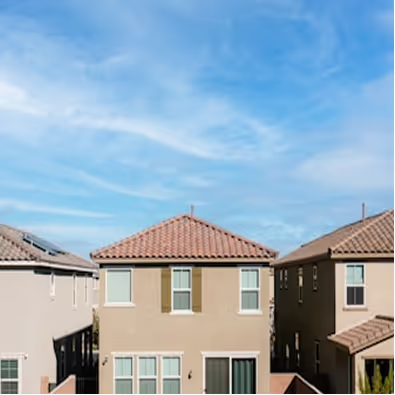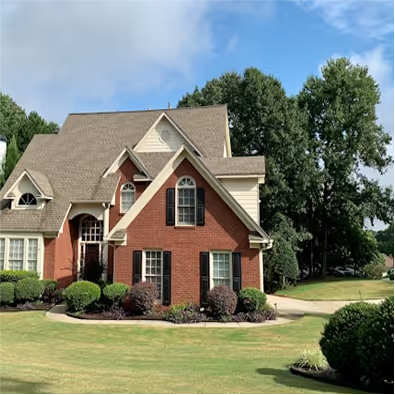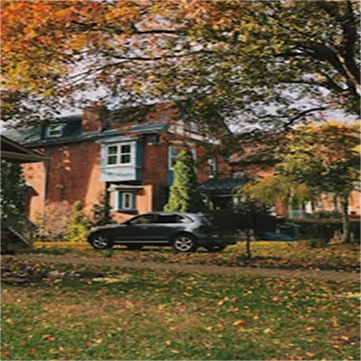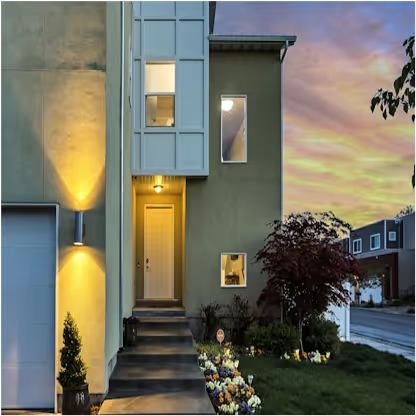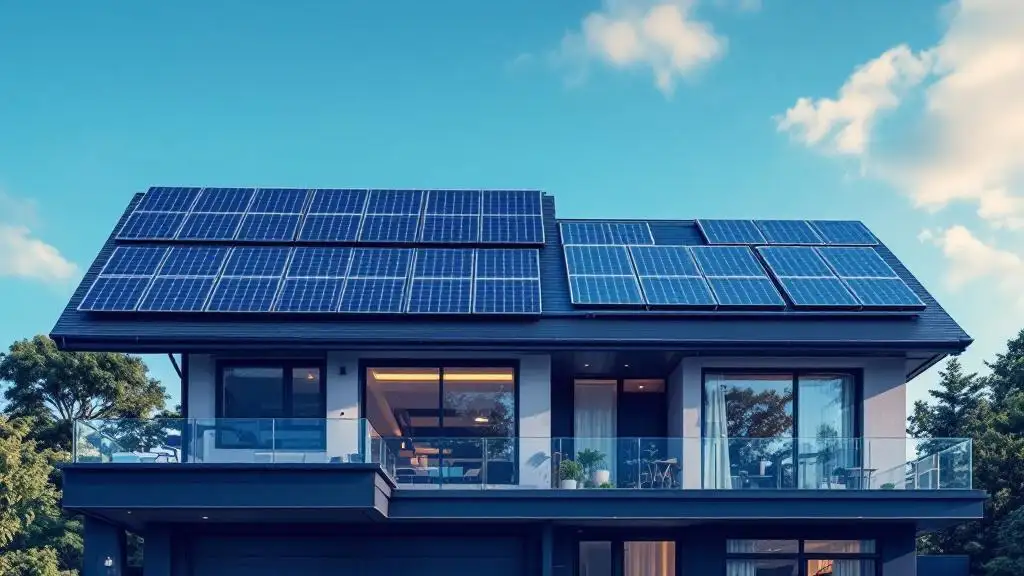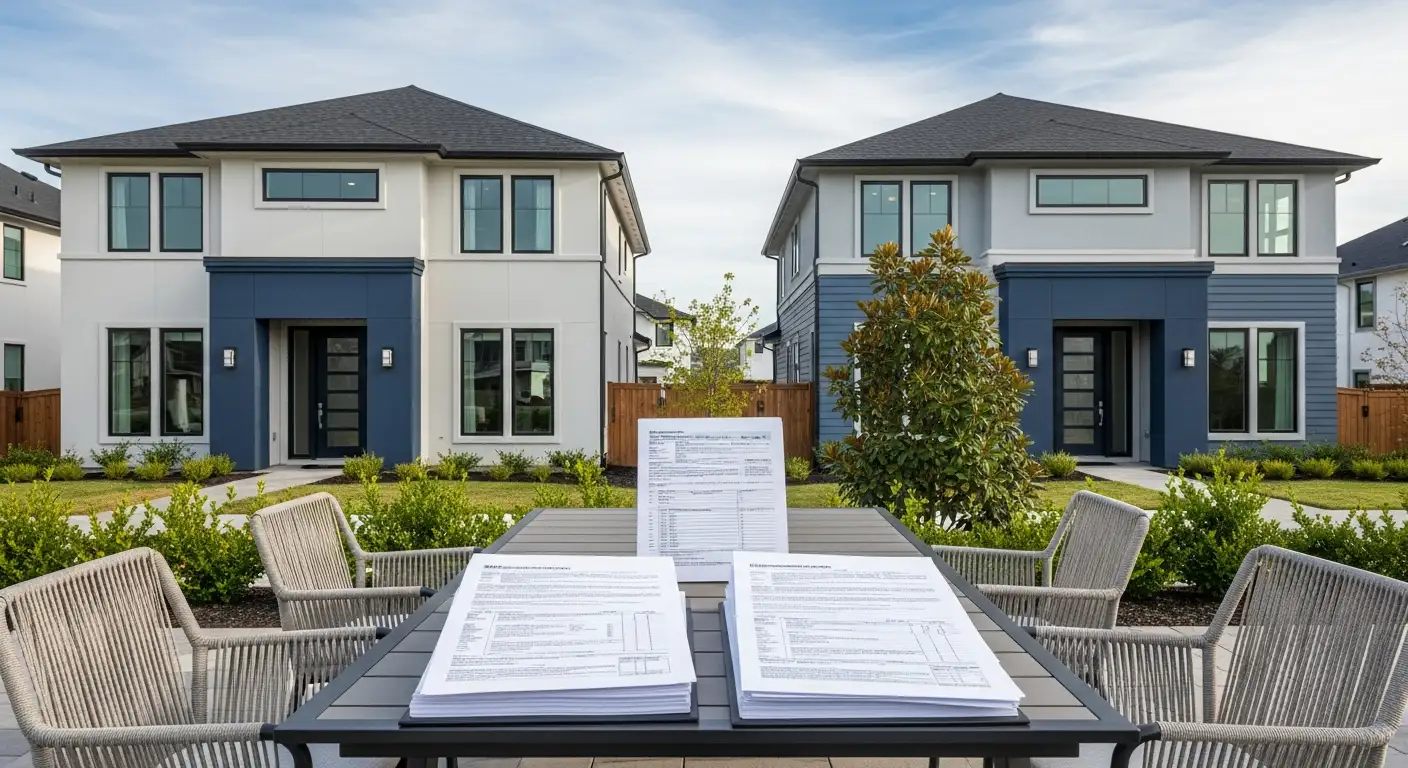Why Energy Efficiency Matters in Today's Mortgage Market
As homeowners and buyers increasingly prioritize sustainability, green home improvements are no longer just about environmental responsibility—they are fast becoming a strategic financial decision. Energy-efficient mortgages and green loans offer pathways to not only reduce utility bills but also enhance loan qualification and affordability by integrating energy-saving upgrades into the mortgage finance process. This article explores how leveraging green home improvements can unlock better loan terms, expand purchasing power, and align with emerging incentives and programs in the residential lending landscape.
Understanding Energy-Efficient Mortgages (EEMs) and Their Financial Impact
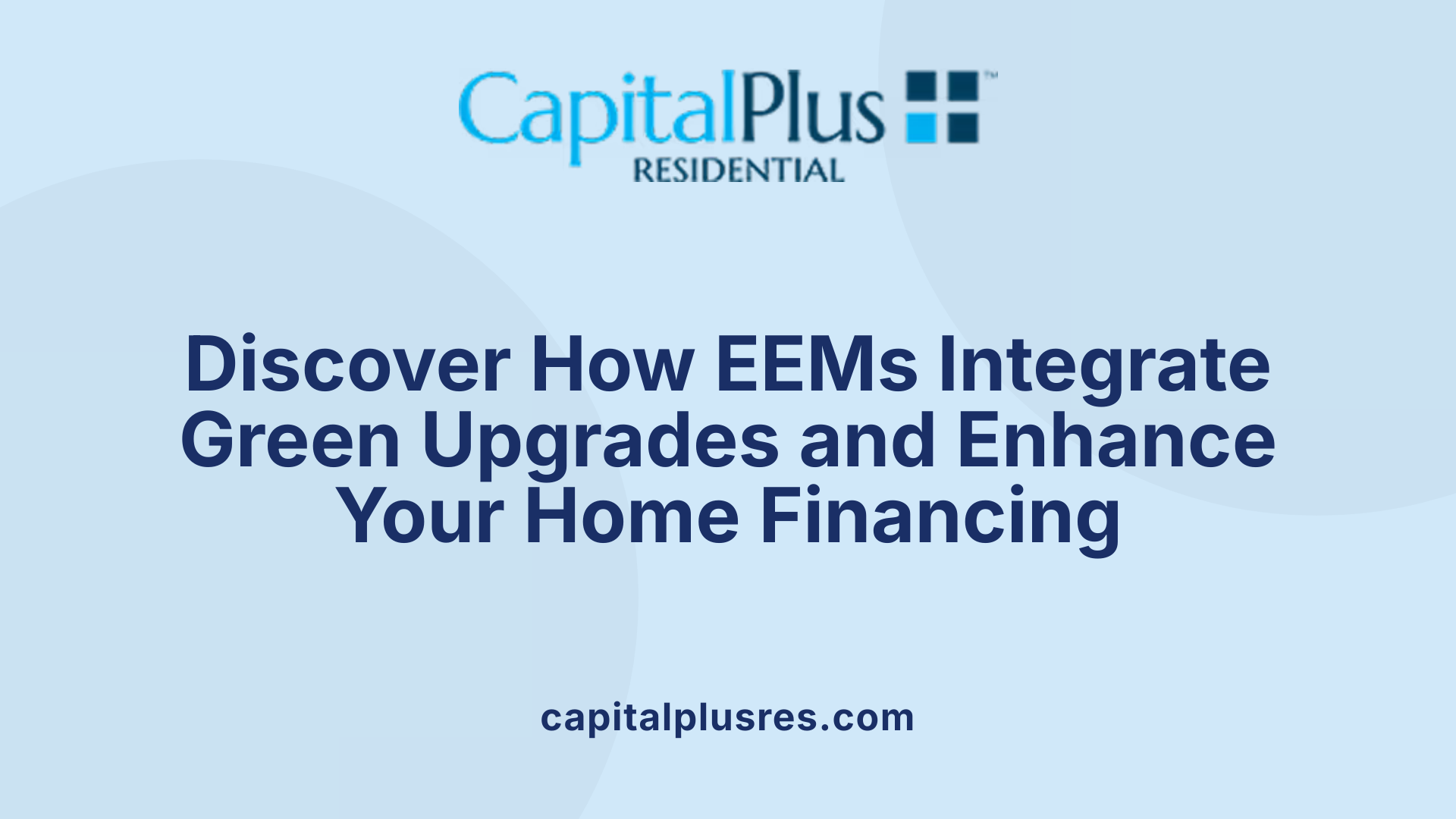
What are energy-efficient mortgages and how do they work?
Energy-efficient mortgages (EEMs) are specialized loan products that enable homeowners to finance clean energy and energy efficiency improvements as part of their primary mortgage. These improvements may include renewable energy installations like solar panels or features like energy-efficient windows. Instead of paying for these upgrades separately, borrowers can roll the costs into their main mortgage when purchasing or refinancing a home.
Integration of clean energy improvements into primary mortgage
EEMs consolidate the costs of eligible energy-saving upgrades into a single loan. This means the mortgage reflects the home's "as-completed" value once improvements are made, often allowing financing of up to 15% of that value for eligible upgrades. This approach streamlines financing and encourages homeowners to invest in sustainability without facing additional loan processes.
Tax benefits associated with EEMs
Most EEMs come with tax-deductible advantages for borrowers, which can further reduce the overall cost of homeownership. By incorporating clean energy investments into the primary mortgage and leveraging existing tax incentives—such as credits for energy efficiency—these loans make environmentally conscious upgrades more financially accessible.
Expanded underwriting criteria reflecting increased cash flow from energy savings
Many energy-efficient mortgages feature flexible underwriting standards. Lenders can expand loan-to-value (LTV) and debt-to-income (DTI) ratios to reflect the expected reduction in utility bills from energy upgrades as additional cash flow. This helps borrowers qualify for larger loans or improved terms because the cost savings effectively increase their financial capacity.
Role of federal agencies and government-sponsored enterprises in EEM offerings
Federal government-sponsored enterprises such as Fannie Mae, Freddie Mac, as well as agencies including FHA, VA, and USDA, play significant roles in providing energy-efficient mortgage options. They define eligibility requirements, underwriting guidelines, and facilitate financing programs like Fannie Mae's HomeStyle Energy Mortgage. Such involvement ensures standardized offerings, consumer protections, and broad accessibility for homeowners seeking efficiency upgrades.
| Aspect | Description | Examples/Agencies Involved |
|---|---|---|
| Definition | Mortgages that include costs of energy improvements within the primary loan | EEMs from Fannie Mae, FHA, VA |
| Financing Cap | Up to 15% of the "as-completed" property value for energy upgrades | HomeStyle Energy Mortgage |
| Tax Benefits | Tax-deductible loan interest and eligibility for tax credits | 45L Tax Credit, IRA incentives |
| Underwriting Flexibility | Expanded loan-to-value and debt-to-income allowances accounting for energy savings | FHA-insured EEMs, VA Energy Efficient Mortgages |
| Government Role | Define criteria, facilitate underwriting, issue loans, ensure protections | Fannie Mae, Freddie Mac, USDA |
Federal Agencies and Government-Sponsored Enterprises Driving Green Financing

Which federal entities offer energy-efficient mortgages and what are their key features?
Energy-efficient mortgages (EEMs) are promoted by several federal agencies and government-sponsored enterprises, such as Fannie Mae, Freddie Mac, FHA, VA, and USDA. These lenders provide both conventional and specialty EEM products designed to make energy improvements more affordable for homeowners.
Conventional EEMs feature flexible underwriting criteria, allowing higher loan-to-value (LTV) ratios and accommodating elevated debt-to-income (DTI) levels by factoring in the cost savings from energy efficiency upgrades. This approach increases borrowing power while supporting lower monthly utility costs.
Programs like Fannie Mae's HomeStyle Energy Mortgage enable financing of clean energy improvements during purchase or refinance, offering up to 15% of the 'as completed' appraised property value. Eligible homes include single-family residences, condos, manufactured homes, and cooperatives, with improvements not compromising structural integrity.
Specialty mortgage offerings are often developed in partnership with state and local governments to include subsidies or incentives for meeting specific energy efficiency criteria. These collaborations help reduce borrower costs and encourage widespread adoption among various income groups.
Government agencies play an essential role by setting standards for eligible technologies, underwriting guidelines, and overseeing loan issuance. They also facilitate incentives such as interest rate reductions or closing cost credits to ease access, especially for underserved communities.
Collectively, these federal programs and partnerships enable homeowners to strategically invest in energy-efficient upgrades, increasing home affordability and sustainability while supporting broader environmental goals.
Green Loans: Alternative Financing for Sustainable Home Upgrades

What are green loans and how do they differ from energy-efficient mortgages?
Green loans are specialized financing options designed specifically for homeowners wishing to make eco-friendly upgrades to their homes. These loans fund improvements such as solar panel installation, energy-efficient appliances, water-saving systems, HVAC upgrades, and weatherization enhancements. Unlike energy-efficient mortgages (EEMs), which bundle the cost of these improvements into the primary mortgage for a home purchase or refinance, green loans are often separate financial products and may take the form of personal loans, home equity lines of credit (HELOCs), or other specialized loan types.
Green loans typically feature attractive terms including lower interest rates and longer repayment periods, making sustainability-focused renovations more affordable. Many also offer tax incentives or rebates that further reduce overall costs for homeowners.
Typical loan types and eligible improvements
Green loans can be structured in various ways depending on the lender:
- Personal Loans: Unsecured loans that do not require home equity.
- Home Equity Lines of Credit (HELOCs): Revolving credit secured by home equity.
- Specialized Green Loan Products: Designed explicitly for energy-efficient upgrades.
Eligible improvements covered by green loans often include:
- Solar panel installations
- Energy-efficient windows and insulation
- Water conservation technologies
- High-efficiency HVAC systems
- Smart thermostats
Role of credit unions and community lenders
Credit unions, such as Valley Credit Union, play a prominent role in offering green loans. These community-focused lenders often provide easier application processes, lower interest rates, reduced fees, and more personalized customer service. Their mission aligns well with supporting local homeowners who want to improve home sustainability.
Distinguishing green loans from EEMs
While both financing options promote energy efficiency, green loans are generally standalone financial products distinct from the primary home mortgage. Conversely, energy-efficient mortgages integrate the improvements directly into the mortgage balance with underwriting adjusted to reflect anticipated energy savings. This structural difference means green loans may be more flexible in some circumstances, while EEMs might provide stronger purchasing or refinancing power by including renovations upfront in the loan.
| Feature | Green Loans | Energy Efficient Mortgages (EEMs) | Description |
|---|---|---|---|
| Loan Structure | Personal loans, HELOCs, specialized products | Incorporated into primary mortgage | EEMs wrap upgrades into main mortgage |
| Interest Rates | Often lower rates | Typically competitive, may offer incentives | Both encourage investment in efficiency |
| Repayment Terms | Longer repayment periods | Standard mortgage terms, up to 30 years | Green loans can vary more by lender |
| Eligible Improvements | Broad including solar, HVAC, water systems | Energy improvements per agency guidelines | Both cover many similar upgrades |
| Provider Examples | Credit unions, private lenders | Federal agencies, GSEs like Fannie Mae, Freddie Mac | Different lender types dominate |
| Tax Incentives and Rebates | Often applicable | Usually tax-deductible as part of mortgage interest | May differ based on product and jurisdiction |
Green loans provide an important financing route for environmentally conscious homeowners, complementing energy efficiency mortgages by offering flexible, accessible options for sustainable home upgrades.
Green Building Certifications and Financial Incentives in Residential Lending

How do green building certifications influence mortgage loan terms?
Green building certifications significantly impact mortgage loan terms by enabling properties to qualify for lower interest rates and more favorable loan pricing. Entities such as Fannie Mae and Freddie Mac recognize certifications that signal a home's commitment to sustainability, leading to financial incentives that benefit both lenders and homeowners.
Certification programs recognized by Fannie Mae and Freddie Mac
Fannie Mae and Freddie Mac support several green certification programs, which verify a property's energy and water efficiency. These certifications are integral in demonstrating that homes meet rigorous environmental standards.
Discounted loan pricing and lower interest rates for certified properties
Properties holding recognized green certifications typically receive discounted loan pricing and reduced interest rates. This financial advantage makes purchasing or refinancing more accessible and attractive for homeowners committed to energy efficiency.
Programs like Fannie Mae Green Rewards and Freddie Mac Green Up®
Both agencies offer specialized programs to encourage eco-friendly improvements:
- Fannie Mae Green Rewards: Provides incentives for energy or water consumption reductions of at least 30%, enhancing loan terms.
- Freddie Mac Green Up®: Offers similar benefits, including discounted rates and cashback incentives to promote sustainable home upgrades.
Requirements for energy and water consumption reductions
To qualify for these programs, properties must demonstrate meaningful reductions, typically around 30% or greater in energy or water use. This ensures that incentives target truly impactful improvements.
Financial rebates and reimbursements for energy assessments
Freddie Mac supports borrowers with rebates for properties achieving Energy Star scores and reimburses costs related to energy audits and Green Assessments. These measures assist homeowners in managing upfront expenses and promote informed decisions on efficiency upgrades.
The integration of green building certifications into mortgage lending fosters sustainable homeownership by providing tangible financial benefits and promoting long-term energy savings.
| Aspect | Description | Impact on Homeowners |
|---|---|---|
| Certification Programs | Recognized by Fannie Mae and Freddie Mac | Validates energy and water efficiency |
| Discounted Loan Pricing | Lower interest rates and costs for certified homes | Reduced monthly mortgage payments |
| Incentive Programs | Fannie Mae Green Rewards, Freddie Mac Green Up® | Encourages substantial consumption reductions |
| Consumption Reduction Requirements | Minimum 30% reduction in energy or water use | Ensures meaningful environmental impact |
| Financial Support | Rebates and reimbursements for energy assessments | Lowers upfront costs for upgrades |
Maximizing Purchasing Power and Loan Eligibility Through GreenCHOICE Mortgages
What are GreenCHOICE Mortgages and what benefits do they offer borrowers?
GreenCHOICE Mortgages® are innovative lending products designed specifically to help borrowers finance energy-efficient home improvements. These improvements include enhancements such as insulation upgrades, high-efficiency HVAC systems, solar water heaters, and window replacements. By integrating these costs directly into a mortgage, homeowners can spread out payments with terms lasting up to 30 years.
Eligible improvements and property types
This program supports a variety of eligible property types, including 1- to 4-unit homes, condominiums, manufactured homes, and cooperative units. The key condition is that energy efficiency upgrades must not compromise the structural integrity of the property.
Mortgage terms and maximum financing limits
GreenCHOICE Mortgages allow financing of energy upgrades up to 15% of the home's "as completed" appraised value. This limit ensures that borrowers can access sufficient funding to achieve meaningful efficiency gains without exceeding practical loan-to-value percentages.
Underwriting advantages including higher debt-to-income ratios
One of the notable underwriting benefits of GreenCHOICE Mortgages is the flexibility in debt-to-income (DTI) ratio calculations. Lenders can approve higher DTIs by factoring in expected utility savings from energy improvements, allowing borrowers greater purchasing power and more favorable loan eligibility.
Integration with other Freddie Mac mortgage products
These mortgages seamlessly integrate with various Freddie Mac products, offering borrowers a flexible and affordable path to financing both their home purchase or refinance along with their energy-efficient upgrades.
Impact on affordability and home sustainability
By reducing utility bills and improving home energy performance, GreenCHOICE Mortgages enhance long-term affordability and sustainability. They help homeowners invest in greener homes that support both environmental goals and financial well-being over time.
Energy Assessments and Their Role in Financing Green Home Improvements
Types of energy assessments
Energy assessments like the Home Energy Rating System (HERS) Index and Home Energy Score play a crucial role in evaluating a home's energy efficiency. These metrics provide standardized ratings that reflect the performance of a property’s energy systems, helping homeowners identify specific upgrades needed to lower energy consumption.
Use in loan valuation and improvement planning
Lenders use these energy scores to assess the value added by green improvements when financing energy-efficient mortgages (EEMs) or GreenCHOICE Mortgages®. The assessments inform underwriting decisions by estimating potential utility savings and validating that the planned upgrades will meaningfully enhance home sustainability.
Relationship to loan qualification and pricing
Energy assessment results contribute to expanded underwriting criteria, enabling borrowers to qualify for higher loan amounts despite increased debt ratios. Favorable scores can secure better loan pricing, including lower interest rates and additional incentives, by demonstrating reduced operational costs and improved property value.
Support programs for assessments and reporting
Programs from agencies like Freddie Mac support homeowners by reimbursing the costs of energy audits and offering rebates for properties that report robust energy performance, such as achieving high Energy Star scores. These financial incentives help offset upfront expenses and encourage participation in green financing options.
Benefits to homeowners and lenders
Homeowners benefit from lower utility bills and increased home affordability thanks to improvements identified through these energy assessments. Lenders gain confidence in loan performance as energy-efficient homes typically experience lower default risks due to reduced operating costs, supporting long-term financial viability for both parties.
How do energy assessments contribute to qualifying for and securing better loan terms?
Energy assessments provide quantifiable evidence of a home’s efficiency, enabling lenders to accurately gauge energy savings potential and expand underwriting flexibility. By validating energy improvements, these assessments justify favorable loan conditions, including increased borrowing power and financial incentives, which ultimately foster broader adoption of energy-efficient housing improvements.
Overcoming Barriers and Promoting Equitable Access to Energy-Efficient Financing
What measures help ensure equitable access to energy-efficient mortgages for low- and moderate-income households?
Energy-efficient mortgages (EEMs) hold promise for reducing utility costs and improving home affordability, but underserved communities often face barriers to accessing these loans. To promote equitable access, lenders and government agencies implement several targeted incentives and program strategies.
One effective approach is offering financial incentives such as interest rate buy-downs and closing cost credits. These reductions help lower the upfront and ongoing expenses associated with mortgages, making energy upgrades more attainable for low- and moderate-income households.
Community outreach and consumer protections
Robust community outreach and consumer education are vital components of successful EEM programs. Engaging with local stakeholders—including non-profits, housing counselors, and community groups—ensures that programs are tailored to specific community needs and that potential applicants understand their options.
Strong consumer protections guard against predatory lending and ensure that borrowers receive clear information regarding terms, obligations, and benefits. These safeguards build trust and encourage participation among historically underserved populations.
The role of state and local governments
State and local governments are instrumental in customizing and administering energy-efficient financing initiatives. They often collaborate with federal agencies and private lenders to design specialty mortgage products that meet local market conditions.
Responsibilities include monitoring program performance, adjusting guidelines to improve accessibility, providing subsidies or grants to reduce borrower costs, and maintaining ongoing communication with communities.
Ensuring affordability and inclusivity
By combining flexible underwriting criteria with targeted incentives, EEM programs can expand purchasing power for energy-efficient homes without placing undue financial burden on borrowers. Priority is given to preserving affordability and ensuring inclusive access, especially for households traditionally left out of such financing opportunities.
Through these integrated efforts, EEMs can advance sustainable homeownership across diverse socioeconomic groups, reducing energy costs while contributing to environmental goals.
The Broader Impact of Green Home Improvements on Home Affordability and Value
How do energy-efficient home improvements affect home value and mortgage affordability?
Energy-efficient improvements in homes play a significant role in enhancing affordability and property value. By reducing utility costs through upgrades such as efficient HVAC systems, solar panels, and improved insulation, homeowners experience lower monthly expenses. This reduction in utility bills improves the homeowner's overall financial profile, making it easier to qualify for mortgages.
Lenders also recognize these benefits during loan underwriting. Energy Savings can translate into increased cash flow, which financial institutions factor into their credit assessments. This often results in more favorable loan terms, expanded loan-to-value ratios, or higher debt-to-income thresholds, allowing for greater purchasing power despite typical qualification barriers.
From a market perspective, green homes are increasingly favored by buyers. Research shows a growing number of real estate listings highlight green features, reflecting heightened buyer interest in sustainability and lower operational costs. This trend boosts property valuation, as eco-friendly enhancements make homes more attractive and competitive.
National tax incentives further improve the financial case for energy-efficient homes. For instance, the Inflation Reduction Act's 45L tax credit offers up to $2,500 for Energy Star-certified homes and up to $5,000 for Zero Energy Ready Homes. Such incentives reduce upfront costs and increase the overall return on investment for green upgrades.
In summary, energy-efficient home improvements contribute to long-term affordability by lowering utility expenses and enhancing mortgage eligibility. Coupled with growing market demand and supportive federal incentives, these upgrades help maintain or increase property values, benefiting both homeowners and lenders in the evolving real estate landscape.
Embracing Green Improvements for Smarter Home Financing
Incorporating energy-efficient upgrades into home finance strategies unlocks multiple benefits—from improved loan terms and expanded purchasing power to tax incentives and increased property value. Energy-efficient mortgages, green loans, and specialized financing programs enable homeowners to invest in sustainability without bearing prohibitive upfront costs. As lenders, government agencies, and community organizations innovate to promote inclusive access, green home improvements are poised to become a cornerstone of affordable, responsible homeownership. Embracing these opportunities today can secure both financial savings and a healthier environment for tomorrow.
References
Latest Blog


Get Pre-Approved Today
Start your secure online application now so you can get pre-approved for a mortgage (and close on your dream home) quickly within 5 minutes.

